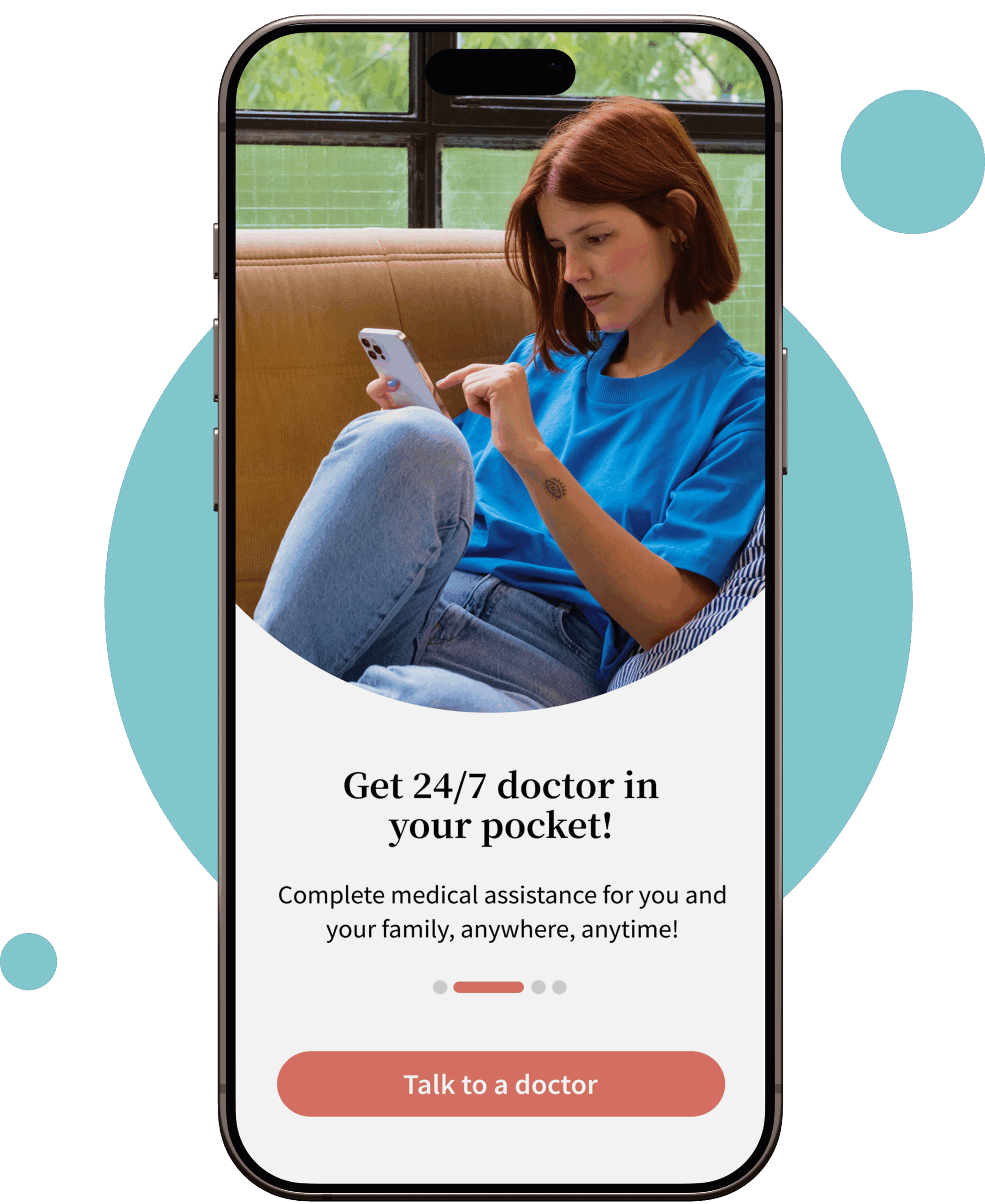Overview
If you’re a coffee lover, noticing that your poop looks like coffee grounds can be disturbing. But you know what’s more disturbing? The seriousness of this condition.
Coffee ground stool, which may not always appear black but dark brown, occurs when your typical medium-brown stool changes to include black or dark brown specks. This can result from a few key causes—either something you’ve eaten or internal bleeding within your gastrointestinal (GI) tract. However, these aren’t the only possible reasons.
Coffee stool may indicate conditions like diverticulitis or a GI bleed that can cause internal blood loss, leading to severe complications if left untreated. These may include severe infections and a dangerous drop in blood count. In extreme cases, ignoring such symptoms could be life-threatening, with risks including severe infection or death.
Are you concerned about stools that look like coffee grounds? Check the symptoms below:
Coffee Ground Appearance in Stool
Dark, granular stool resembling coffee grounds.
This may suggest bleeding in your upper digestive tract or conditions like peptic ulcers.
Get immediate medical helpUnusual Bowel Movements (Green or Black Specks in Stool)
Unusual stool appearance with black or green specks indicating potential digestive issues or infections.
This may result from GI bleeding or infections.
Get Antibiotic PrescriptionStomach Pain and Other Discomfort
Numb or tingling feeling alongside the cold sensation in the chest.
These signs may indicate Gastroenteritis, GERD, or ulcers, requiring prompt evaluation to prevent complications.
Get Treated NowWhat does coffee ground stool look like?
The normal poop would look like solid medium brown with no extra texture or specks.
The coffee ground stool is a specific type of stool appearance characterized by its dark color and granular, coffee-ground-like texture.
It typically appears dark brown but not black, similar to the grounds left at the bottom of a coffee cup after brewing.
It’s important to note that coffee ground specks in poop are not directly or indirectly related to consuming more coffee or any coffee-related foods. Instead, there are a variety of reasons why it can happen.
Poop that looks like green coffee grounds
Poop that looks like green specks is called Melena and can occur due to the same causes as black ones. It can indicate a serious medical condition like bacterial or parasitic infection or sometimes the sign of the undigested food you have eaten.
Poop looks like coffee grounds? Warning signs you shouldn’t ignore
If your poop looks like coffee grounds, it can be alarming and may indicate a serious undiagnosed condition. Although this appearance is not caused by drinking coffee but could be linked to gastrointestinal issues such as colitis, a bleeding ulcer, GI cancers, or even fresh red blood. In such cases, immediate medical attention is a must.
Urgent Signs to look for
When your bowel movement looks like coffee grounds, it may be accompanied by other serious symptoms. Some of the warning signs you must not ignore if your stool looks like coffee grounds are:
- Vomiting with a coffee ground-like appearance
- Several days of melena (black, tarry stools)
- Heart palpitations or irregular heartbeats
- Dizziness or lightheadedness
- Blood visible in your stool
- Weakness and fatigue
- Shortness of breath
- Stomach pain
If any of these symptoms persist or worsen, seeking professional help is crucial. Delaying treatment could lead to more severe complications.
What are the causes of black specks in poop?
Our poop is composed of waste material and water, expelled by the body after metabolism. The texture and color of our stool can give us an idea about our overall health. Any deviation from the normal appearance of your stool — whether it’s color, texture, or frequency — can indicate that something is wrong with your diet or overall well-being.
When poop looks like coffee grounds, it often suggests underlying medical concerns that may need attention. Whether it’s black specks, dark pigmentation, or unusual textures, these signs could point to serious conditions like gastrointestinal bleeding or less critical causes, such as dietary changes. Let’s explore the potential reasons why your stool looks like coffee grounds and what actions you should take.
- Consumption of foods with dark pigments: Foods like blueberries, beets, or dark chocolate may not dissolve entirely during digestion and can appear as black specks in your poop.
- Iron-containing foods or supplements: Iron-rich foods or supplements can also result in poop that looks like coffee grounds or dark specks.
- Activated charcoal: Often used in medical treatments for poisoning while decontaminating GI tract toxin, activated charcoal may cause coffee-ground-like stool or black specks in bowel movements.
- Gastrointestinal bleeding: Bleeding in the upper GI tract, such as the stomach or upper small intestine, can lead to black, tarry stools known as “melena,” which is a common cause of coffee ground poop. This can result from conditions like peptic ulcers or gastritis.
- Medication side effects: Medications like pepto-bismol (Bismuth Subsalicylate) can change stool color and texture, leading to coffee-ground stool.
- Gastrointestinal cancers: Although rare, black specks in stool can indicate gastric cancer. If this persists, seeking medical attention is critical.
- Chronic conditions: Conditions like celiac disease or Crohn’s disease affect nutrient absorption in the digestive tract, impacting the appearance of stool, sometimes causing poop that looks like dirt or coffee grounds.
- Anal fissures or hemorrhoids: Small amounts of blood from anal tears or hemorrhoids can mix with stool, leading to black specks that resemble coffee-ground diarrhea.
- Ingestion of foreign objects: Accidentally swallowing non-food items like plastic or metal fragments can also result in poop, like coffee grounds.
What should I do about the grounds?
It’s uncommon to see black or green specks in your stool. Consider remembering the food you have eaten in the last 48 hours. If the symptoms disappear the second or third time, you can definitely blame the food you have eaten.
If not, it’s just the right time to see the online doctor or visit the office near you and discuss all the signs and symptoms before it’s too late. Early diagnosis and prevention are much better than any further treatment.
What are the treatment options for coffee ground poop?
Treating coffee ground stool effectively depends on identifying the root cause of this abnormal bowel movement. Each factor requires specific attention, whether it is due to gastrointestinal bleeding, certain medications, or chronic conditions. It’s important to prevent serious complications like internal bleeding and severe infection via early diagnosis and targeted treatment.
1. Identify the cause
The first step in treating coffee ground stool is determining the underlying cause. A healthcare provider may take a detailed medical history, request a stool sample, or order diagnostic tests such as liver function tests, imaging studies, or an endoscopy. These will help identify the source of the issue, whether it’s gastrointestinal bleeding, an infection, or another condition.
2. Stop internal bleeding
If the coffee ground poop is present due to internal bleeding, immediately see a doctor. Depending on the bleeding site, treatments may include:
- Endoscopic therapy: A doctor may inject chemicals or cauterize (burn) the bleeding site using an endoscope.
- Angiography: This imaging technique helps identify the bleeding source and allows the doctor to inject medication that stops the bleeding.
- Surgery: In severe cases, surgery might be needed to stop the bleeding or address underlying conditions such as ulcers or tumors.
3. Treat the undiagnosed condition
Addressing the root cause of coffee ground stool is crucial for a proper treatment plan. Treatment varies based on the diagnosis:
- Medication-related causes: If stool color change is caused by medications (like iron supplements or Pepto-Bismol), adjusting the dosage or switching to an alternative may resolve the issue.
- Infections: If a bacterial or parasitic infection is responsible, antibiotics or antiparasitic medications may be prescribed.
- Gastrointestinal conditions: For conditions like peptic ulcers, gastritis, or GI cancers, specific treatments like proton pump inhibitors, chemotherapy, or surgical interventions may be required.
4. Dietary and lifestyle adjustments
If the coffee ground stool is related to diet, such as consuming foods with dark pigments (e.g., blueberries, beets, or dark chocolate), changing your eating habits may help:
- Avoiding foods or supplements that can darken stool, such as iron supplements, activated charcoal, or dark-colored foods.
- Increasing fluid intake to prevent dehydration and promote healthy bowel movements.
5. Address chronic or severe conditions
For more serious or chronic conditions like Crohn’s disease, celiac disease, or gastric cancer, long-term treatment plans are needed:
- Cancer treatments: If gastrointestinal cancer is suspected, treatments such as surgery, chemotherapy, or radiation may be required.
- Crohn’s disease and celiac disease: A healthcare provider may prescribe medications to manage inflammation, and a special diet to support nutrient absorption.
When to consult a doctor?
Recognizing when coffee ground stool signifies a more urgent problem is essential. Left untreated, severe cases of gastrointestinal bleeding can lead to complications such as shock, organ failure, or even death. Urgent care from a doctor is required if you experience:
- Persistent or worsening symptoms like vomiting that looks like coffee grounds
- Dizziness
- Shortness of breath
- Severe abdominal pain
There are signs of significant blood loss, such as black tarry stools (melena) or fainting. Therefore, see a doctor without delay.
FAQs About Coffee Ground Stool
Yes, if your stool looks like coffee grounds or you notice red streaks in it you should talk to your healthcare provider immediately. It may or may not be a medical emergency depending upon the cause.
Just look at what you have eaten in the last 24-48 hours. If it’s something that you can avoid and symptoms disappear you probably have fixed it. If it still persists, you probably can’t do anything at home without medical help.
Yes, it does. It’s good to get yourself checked by a medical caregiver for proper diagnosis and treatment.







